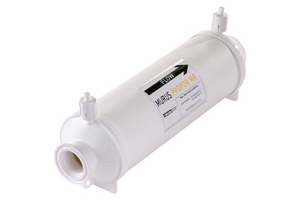 Mycoplasma may be the smallest class of free-living microorganism, but the consequences of contamination in a cell batch can be huge with manufacturers suffering reduced yields and lost product batches, and patients’ safety being placed under threat. In severe cases, the future of the manufacturing company may also be at risk.
Mycoplasma may be the smallest class of free-living microorganism, but the consequences of contamination in a cell batch can be huge with manufacturers suffering reduced yields and lost product batches, and patients’ safety being placed under threat. In severe cases, the future of the manufacturing company may also be at risk.
Mycoplasma is notoriously difficult to guard against due to its slow growing nature, its ability to multiply in refrigerated storage conditions and its deform-able cells allowing it to penetrate sterilizing grade filtration.
However, there are numerous detection and prevention techniques available to bio-pharmaceutical manufacturers. In addition, methods to remove Mycoplasma during a process can also be implemented.
Mycoplasma removal through filtration
Parker Domnick Hunter conducted a poll during a recent webinar Implementing a Risk-Management Based Approach to the Prevention of Mycoplasma Contamination, which showed that 45% (n=84) of respondents were using 0.2 micron filters to sterilize growth media. However, Mycoplasma species are capable of penetrating 0.2 micron filters. Therefore, a process with this level of filtration may not be protected from contamination. For this reason, Parker domnick hunter recommends a 0.1 micron filter, such as PROPOR MR, for sterilizing growth media. PROPOR MR, Parker domnick hunter’s Mycoplasma-retentive filter, offers fast, efficient and cost-effective Mycoplasma removal from cell-culture media.
Furthermore, assurance against contamination can be increased by additional characterization of a filtration step within a particular process. In the same poll, the majority of respondents (n=65) indicated that they rely on the filter manufacturer’s Mycoplasma claim to validate the filter’s performance in their process. These retention claims are usually performed under set conditions, usually with Acholeplasma laidlawii as the test organism, and therefore will rarely represent actual or worst-case processing conditions.
Can filtration process conditions affect Mycoplasma retention?
A poll also asked the question “Do you believe that a higher level of filtration process control could reduce the risk of cell culture contamination?” An overwhelming 95% (n=66) of respondents believed that the answer is yes.
Parker Domnick Hunter recently carried out a study to determine whether there is a link between filter pressure and retention levels using Mycoplasma faucium, an organism that has previously been isolated from the human oropharynx.
Challenges were conducted at different pressures with conditions continuously monitored using a SciPres® single-use pressure sensor.
Results show a clear relationship between filtration pressure and filter performance with retention rates dropping dramatically once a threshold pressure was exceeded. We speculate that, at this identified threshold pressure, the mechanical strength of cells present on the membrane is overcome, causing them to be deformed and forcing them through the filter pores (read the full white paper here).
Process Automation
By automating a process, pressure levels can be constantly monitored and, if sporadic pressure peaks occur, they can be identified and controlled as part of the automated process.
Systems such as our SciLog® SciFlex® NFF platform with single use flow-path, allow safe, automated processing and documented evidence that pressure limits are not exceeded. Pre-assembled single-use manifolds can also be gamma-irradiated as an additional risk-mitigating step in the fight against Mycoplasma contamination.
For further information in relation to the above, please send us a product enquiry or contact Derek Clifford on
Ireland: +353 21 4510900 or UK +44 1633 877505
Re-Post: originally posted by Parker domnick hunter Process Filtration, UK
